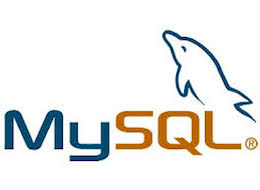How To Install MySQL on Rocky Linux 9

In this tutorial, we will show you how to install MySQL on Rocky Linux 9. For those of you who didn’t know, MySQL is a widely used open-source relational database management system (RDBMS) that provides a robust and scalable solution for storing, managing, and retrieving data. It is particularly popular among web developers, system administrators, and database administrators due to its reliability, performance, and ease of use.
This article assumes you have at least basic knowledge of Linux, know how to use the shell, and most importantly, you host your site on your own VPS. The installation is quite simple and assumes you are running in the root account, if not you may need to add ‘sudo‘ to the commands to get root privileges. I will show you the step-by-step installation of MySQL 8 on Rocky Linux. 9.
Prerequisites
- A server running one of the following operating systems: Rocky Linux 9.
- It’s recommended that you use a fresh OS install to prevent any potential issues.
- SSH access to the server (or just open Terminal if you’re on a desktop).
- A
non-root sudo useror access to theroot user. We recommend acting as anon-root sudo user, however, as you can harm your system if you’re not careful when acting as the root.
Install MySQL on Rocky Linux 9
Step 1. It’s always a good idea to keep your system up-to-date with the latest security patches and bug fixes. Before installing any new packages, run the following command to update your Rocky Linux 9 system:
sudo dnf check-update sudo dnf install dnf-utils
Step 2. Installing MySQL Database on Rocky Linux 9.
By default, MySQL is available on the Rocky Linux 9 base repository. Now run the following command below to install the latest version of MySQL to your system:
sudo dnf install mysql mysql-server mysql-devel
Next, start the MySQL service and enable it to automatically start on boot by running the following command below:
sudo systemctl enable --now mysqld sudo systemctl start mysqld sudo systemctl status mysqld
If the MySQL service fails to start, you can check the error log for more information:
sudo tail /var/log/mysqld.log
Verify the build of the version of MySQL:
mysql --version
Step 3. Securing MySQL.
By default, MySQL is not hardened. You can secure MySQL using the mysql_secure_installation script. you should read each step carefully which will set a root password, remove anonymous users, disallow remote root login, and remove the test database and access to secure MySQL:
mysql_secure_installation
Configure it like this:
- Set root password? [Y/n] y - Remove anonymous users? [Y/n] y - Disallow root login remotely? [Y/n] y - Remove test database and access to it? [Y/n] y - Reload privilege tables now? [Y/n] y
Step 4. Accessing MySQL.
Once secured, you can test the connection to your MySQL server:
mysql -u root -p
mysqlis the name of the command you are using to connect to the MySQL server.-uroot tells MariaDB that you want to log in as the root user.-pensures that you are prompted to enter your password before the MySQL shell will connect.
You will see your MySQL console:
Enter password: Welcome to the MySQL monitor. Commands end with ; or \g. Your MySQL connection id is 15 Server version: 8.0.31 MySQL Community Server - GPL Copyright (c) 2000, 2022, Oracle and/or its affiliates. Oracle is a registered trademark of Oracle Corporation and/or its affiliates. Other names may be trademarks of their respective owners. Type 'help;' or '\h' for help. Type '\c' to clear the current input statement. mysql>
Once you’re connected to the MySQL server, you can create a new database using the CREATE DATABASE statement:
CREATE DATABASE mydatabase;
Replace “mydatabase” with the desired name for your database.
Next, you can create a new user and grant them privileges to access the database you just created. Here’s an example:
CREATE USER 'myuser'@'localhost' IDENTIFIED BY 'mypassword'; GRANT ALL ON mydatabase.* TO 'myuser'@'localhost';
This command creates a new user named “myuser” with the password “mypassword” and grants them all privileges on the “mydatabase” database.
Congratulations! You have successfully installed MySQL. Thanks for using this tutorial for installing the MySQL database on your Rocky Linux 9 system. For additional help or useful information, we recommend you check the official MySQL website.